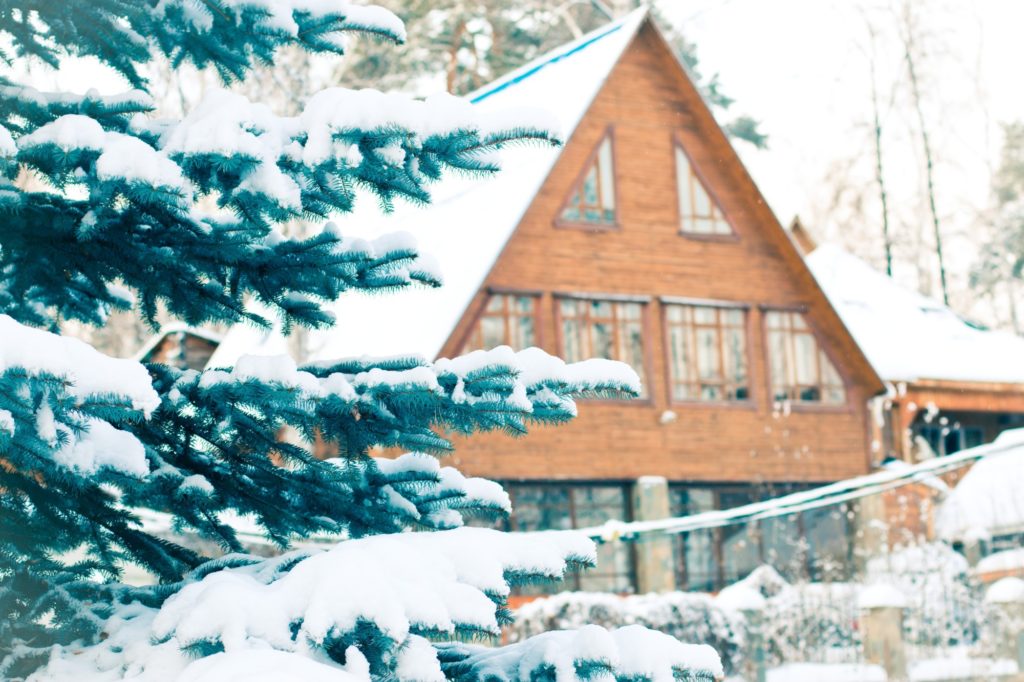Baby, It’s Cold Outside: Preparing Your Home for Winter in the Pacific Northwest

There's nothing quite like the feeling of moving into a brand new house. Unfortunately, the Pacific Northwest doesn't give us consistent weather for the whole year, and that means you have to prepare your home for winter.
And yes, even if you're in a brand new community, you need to start preparing your home for winter—the earlier the better.
Here are a few essential tips to start preparing your home for cold days ahead.
Tune Up Your Heating System
With winter right around the corner, the first order of business is to ensure your heating system is ready for the cold weather. This is more important than you think, as heating and cooling systems often go overlooked when they're not in use.
If you haven't yet called for your annual repair service, call right away (hint: the earlier you call, the better shot you have of getting a prompt appointment). Even if you're comfortable winterizing your heating system yourself, you should still get it inspected annually to ensure everything is up to speed.
Do a test run of your heat system to ensure that it's ready for the winter. And don't forget to check your thermostat—a fully functional system can still get thrown out of whack by your thermostat.
You should also inspect your furnace and perform basic maintenance if needed. But again, if you don't know your way around furnace repair, it's always better to hire a technician for expert advice.
Winterize Your AC
Conversely, you also need to winterize your AC system to ensure it stays in good condition until springtime.
This is the time of year to clean and cover your condensing unit. Get rid of the debris before covering it—you don't want it to accumulate over the winter.
If you have a window AC unit, remove it, clean it, and store it for the winter. If left out, these units are quite difficult to seal against winter weather and will hike up your heating bill throughout the winter.
If you can't remove your window air conditioning unit, close the vents and get an air conditioning cover.
Inspect Your Fireplace
Of course, your heating vents aren't the only source of warmth in the wintertime. There's nothing quite like curling up in front of a crackling fire with a mug of hot cocoa and a giant blanket. But in order to achieve peak winter coziness, you have to ensure your fireplace is ready for the cold.
Start by inspecting the lining of the firebox (the interior of the fireplace). Look for any cracks, gaps, or signs of wear. If you're handy around the house, you may be able to fix these issues yourself.
However, if the firebox has worn away to the point that you can see the steel body, bring in the pros to do some repair work.
Also, if your fireplace has smoke stains, that's a glaring red flag that your fireplace isn't working properly. Smoke stains on the ceiling near your fireplace indicate that smoke is escaping from a gap between the hearth and the firebox, usually because the hearth has settled.
You'll need a skilled mason or fireplace professional to fix that problem. Don't light the fireplace again until the problem has been repaired.
Also, don't forget about the chimney. Most homeowners assume their chimney is in good working order, and that can come back to bite you. If you haven't had your annual inspection, now is the time to schedule it.
Hit the Roof (and the Gutters)
When the weather outside is frightful, the roof over your head is your first line of defense. Don't wait until severe weather to test whether your roof is ready for the job.
If you're not comfortable scaling a ladder to inspect the roof, grab a pair of binoculars and get a close look at the shingles. Look for any signs of wear and tear, including any missing, loose, or damaged shingles. These are invitations for water damage and escaping heat, your two worst enemies in winter.
If needed, hire a handyman or roofing company to repair your roof for you. Yes, even if the roof isn't at the end of its promised shelf life. Roofs that have weathered storms will inevitably age faster.
Also, now is the time to clean your roof and gutters of any debris. Rake any sitting leaves off your roof to prevent moisture buildup, and make sure to blow your gutters clean—you don't want any snow to accumulate there, and you certainly don't want ice to build up there. That's an invitation to water damage.
Insulate Your Windows
Last but not least, don't forget to insulate your windows—winter drafts are a fantastic way to drive up your energy bill, and they often come from poorly insulated windows.
The best solution is to update your weather stripping and caulk. The high-tech way to check for drafts is a thermal gun, but failing that, move a lit candle slowly around the window frame. If there's a draft, the flame will blow toward you.
If you're in the market for caulk, look for rope caulk—it's soft and sticky and can be molded to fit a gap, but can also be removed and refreshed at the end of the cold season.
Start Preparing Your Home for Winter Early
If you can afford to, it's always best to start preparing your home for winter early. That way, you can deal with any unexpected issues before they can become real problems.
Need more resources to make your home better than ever? Get in touch today to let us know how we can help.
